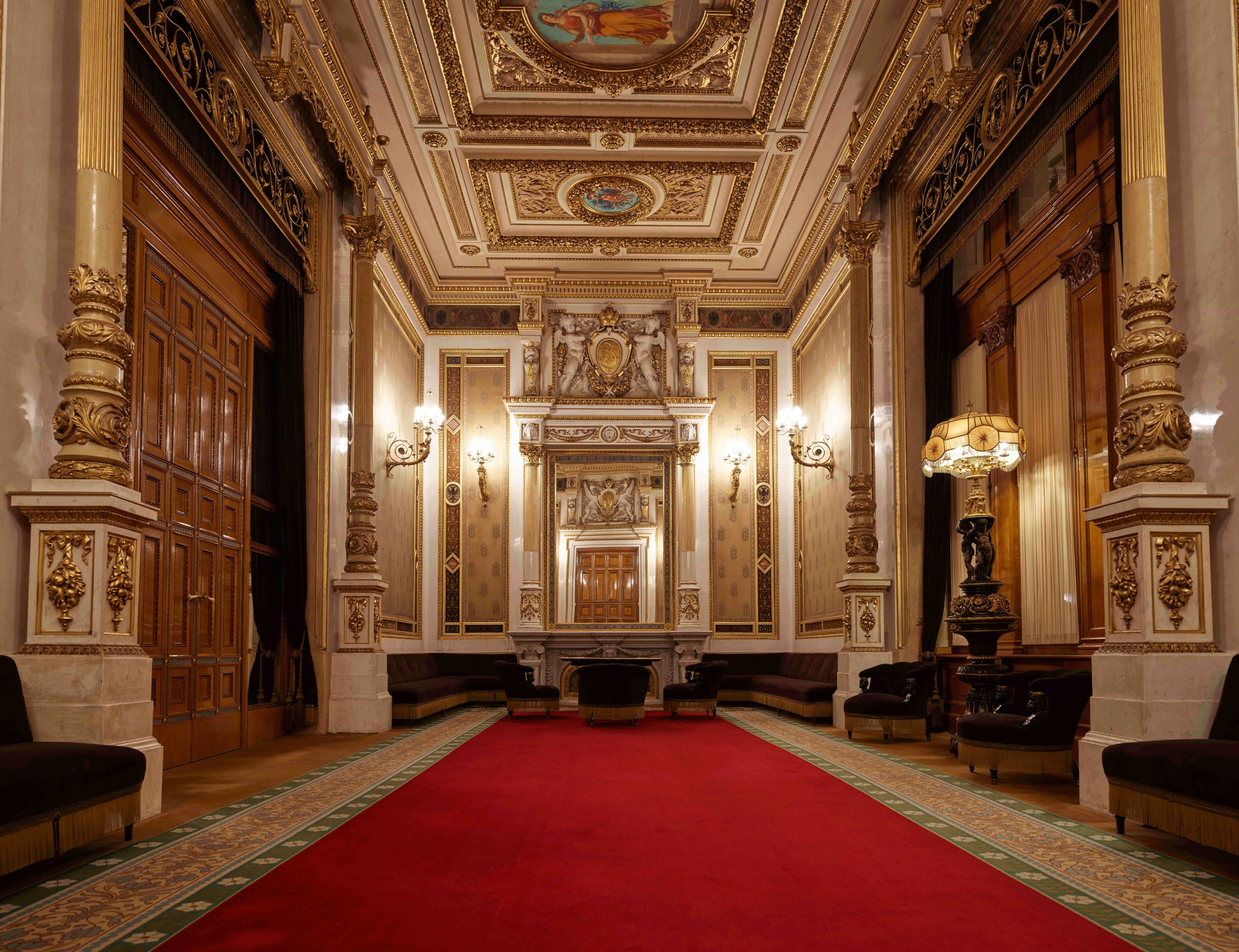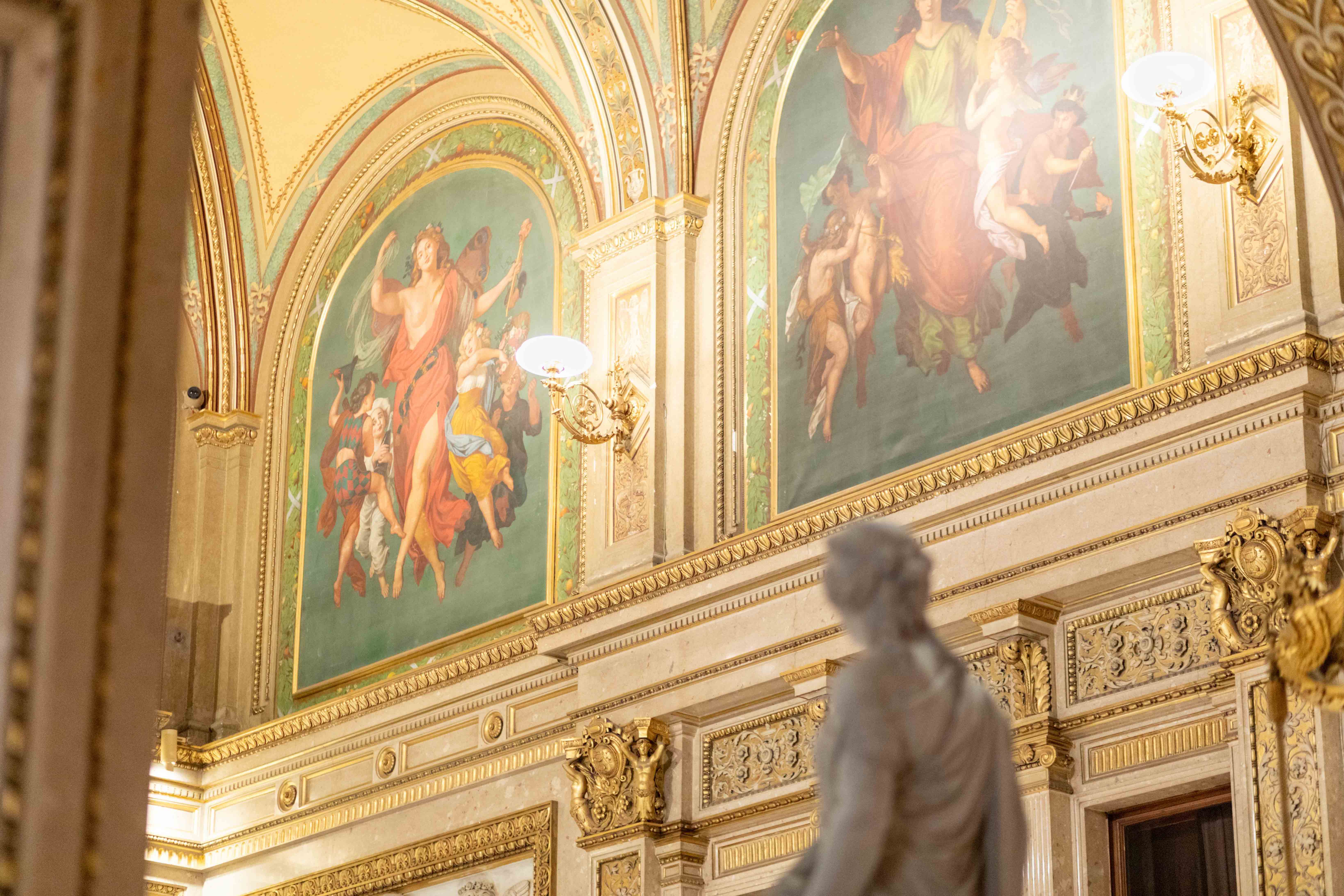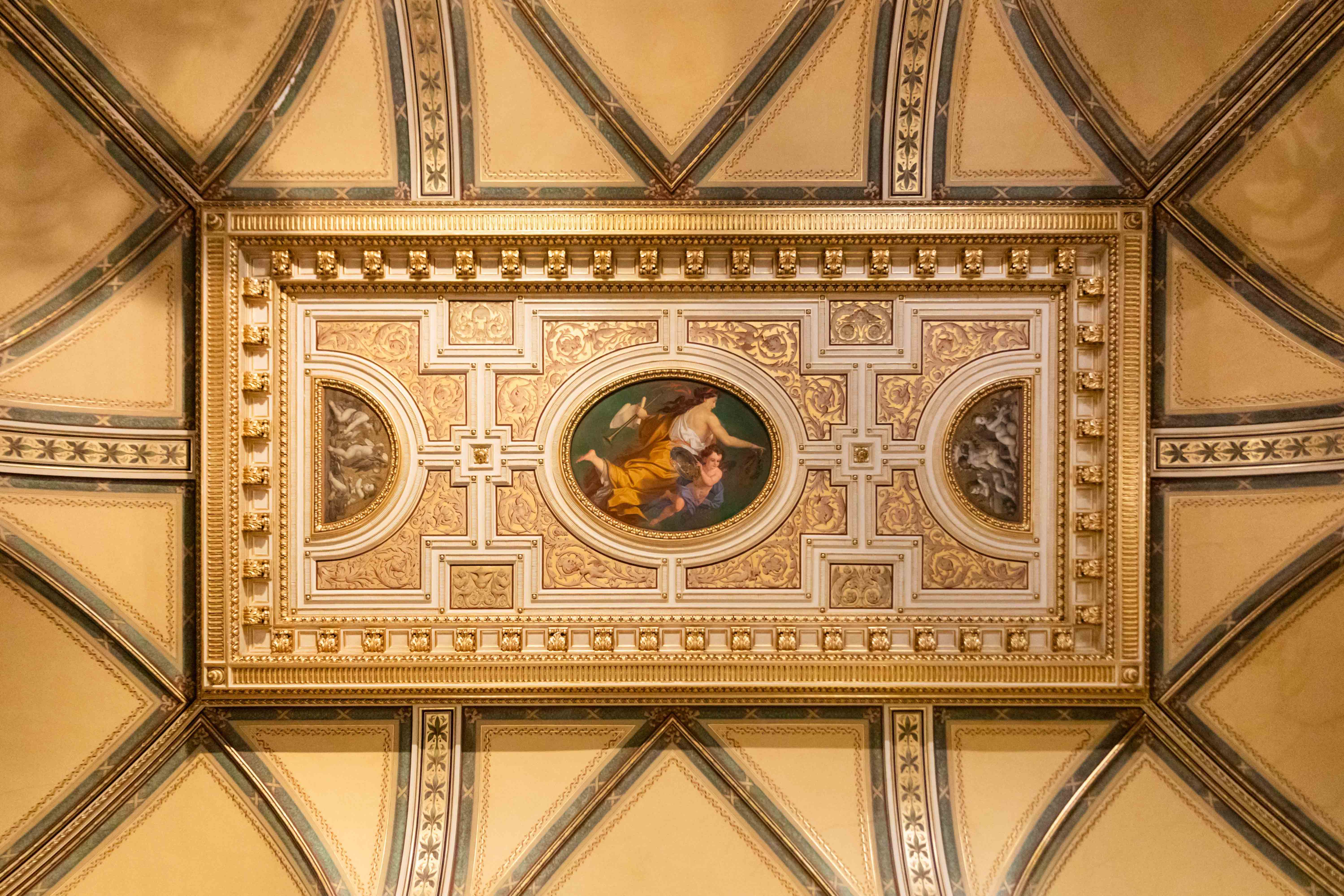
The house from the inside
If you enter the box office vestibule, which has been preserved in its original form, through one of the doors on the main front, you get an immediate impression of the interior of the old opera house.

The entire main front and with it the main vestibule, the central staircase (the lower part of which is also known as the "Feststiege"), the foyer and the loggia as well as the tea room on the second floor have been preserved in their original form to this day.
On the first landing of the grand staircase, to the side of the central entrance to the parterres, are the portraits of the two builders August Sicard von Sicardsburg and Eduard van der Nüll: two medallions designed by the sculptor Josef Cesar. Above them are two high-relief depictions by Johann Preleuthner, symbolizing ballet and opera.
A special ornament of the staircase is the ceiling painting Fortuna, scattering her gifts, designed by Franz Dobiaschofsky.
He also created the three wall paintings on canvas in the round arches, which depict ballet, comic and tragic opera. The seven allegorical statues, designed by Josef Gasser, embody the seven liberal arts: Architecture, Sculpture, Poetry, Dance, Musical Art, Drama and Painting.

The tea salon, formerly known as the imperial salon, is an impressive relic from the imperial era and is located between the ceremonial staircase and the central box. Once reserved exclusively for the court, the room served as a retreat and reception room for the emperor and his guests. Today, the tea room is a testimony to Austrian Historicism and one of the best-preserved example of decorative arts from this era.
The central ceiling painting of the tea salon, Music on Eagle's Wings by Karl Madjera, shows the allegorical figure of music surrounded by depictions of lyrical and tragic music. This lively depiction of the arts has retained its freshness of color and shines brightly thanks to the gilding on the ceiling and walls. The wall and ceiling decorations with 22-carat gold leaf, as well as the tapestries with the initials of Franz Joseph I, bear witness to the splendor and craftsmanship that went into the decoration of the salon.
Designed by Viennese interior designer Josef von Storck, the tea room is a masterpiece of historicism and is modeled on the Second Viennese Rococo. Particularly ornate details, such as the ivory door handles and the walls covered in golden silk, emphasize the luxurious character of the room. The furnishings are complemented by sculptures by Auguste La Ligne as well as silk, gold and silver embroidery from renowned Viennese manufacturers. A frieze of orange blossoms, imperial coats of arms and ribbons, which is located under the cornice, was even awarded a silver medal at an exhibition in Paris.
The ceiling painting by Carl Madjera shows music as a female figure with a lyre, surrounded by allegories of poetry and dance. Other arts, including architecture, painting, sculpture and engineering, are depicted as cherubs. An architectural cherub holds the plans of the State Opera, symbolizing the connection between art and the Vienna Opera. The side pictures refer to the tragic and comic opera and complement the overall artwork of the room. The uniform golden yellow colouring makes the pictures look like artistic enamel works and gives the room a luxurious, almost immaterialized effect.
The tea room was designed as a retreat for the emperor and is directly connected to the Hoffestloge/Emperor’s Box(now central box). The walls are decorated with the monograms of Franz Joseph and Empress Elisabeth, which are also visible above the fireplace mirror and the side entrances and windows to the ceremonial staircase. These details are a reminder of the salon's once exclusive function for the court. Today, the tea room is used for press conferences, interviews, honors and awards. During opera performances, the room can also be hired as an interval room, which means that it continues to serve as a place for receptions and special occasions.


